The Real Dirt Blog
-
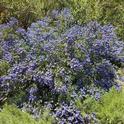
Firewise: Fire Resistant Plants
The devastating Camp Fire of 2018, along with the numerous fires North State residents have experienced since then, have led many of us to focus on creating a defensible fire-resistant landscape...
-
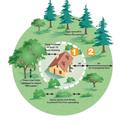
Be Firewise with Fire Resistant Landscaping
It's springtime, and many of us are adding new plants to our gardens. That means it is also a good time to review the principles of creating defensible space around our homes. Fire is a normal...
-
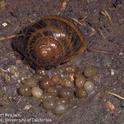
Using Integrated Pest Management to Control Slugs and Snails
Our rainy spring weather has been great for our gardens – but may also have encouraged some unwelcome garden visitors, including snails and slugs. Snails and slugs are similar in structure and...
-
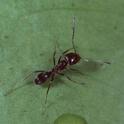
Dealing with an Ant Invasion
It's that time of the year again – Ant Season! We often experience ants in our homes when weather conditions change. They are typically looking for food, water, warmth, and/or protection...
-
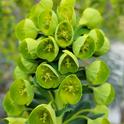
Euphorbias Thrive in Our Climate
Looking for a drought tolerant plant? Euphorbias are one of the most dramatic garden plants, and they happen to do well in our ongoing conditions of drought. The genus is expansive and...
-
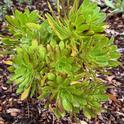
Echeveria and Sempervivum and Graptopetalum, Oh My!
The current emphasis on water-wise gardening has created an interest in succulents. All succulents are able to store water and food in their leaves, stems and roots. These stored...
-

Community Garden and Composting Hub in Gridley - The Garden at St. Timothy’s
What can you do with a plot of land that's empty and full of weeds? Plant a garden and start composting with your neighbors! St. Timothy's Episcopal Church in Gridley, with the help of generous...
-
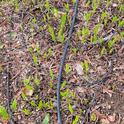
Watering and Irrigation
If you plan to travel this summer, now might be a good time to install an automatic watering system. Doing so can ensure that your plants will not be under-watered or over-watered in your...
-

Healing Gardens
Quiet, solitude and a connection with nature can be vital to one's peace of mind. Health care centers and hospitals have discovered this, and often incorporate garden spaces into their architectural...
-

Mason Bees
As concern grows over the decline in the honey bee population, alternative pollinators are gaining attention. Mason bees, which are native to North America, are one option. These gentle-natured bees...
-

The History of Community Supported Agriculture
We are lucky to live in an area with a number of Community Supported Agriculture (CSA) farms which provide members with fantastic locally-grown vegetables and fruits. The CSA movement is a...
-
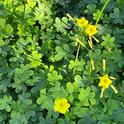
What Makes a Weed a Weed?
For many of us, gardening involves a constant battle with weeds. Basically, a weed is nothing more than a plant growing where it is not wanted, the classic example being dandelions in the...
-
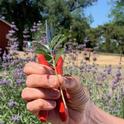
Master Gardener Spring 2024 Workshop Series
A new season of Master Gardener Workshops is about to start! The series begins February 3 with a timely session on starting summer vegetable plants from seed and concludes at the end of May with an...
-
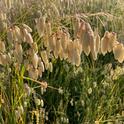
Seeds are Life: Reflections on Jennifer Jewell’s “What We Sow”
“You should learn to plant something. This is the first connection.” Floyd Red Crow Westerman Local author, gardener and radio host Jennifer Jewell's new book “What We Sow:...
-
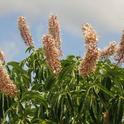
Finding an Ecological Niche: The Buckeye
[Note: Buckeye (Aesculus californica), gray pine (Pinus sabiniana), and blue oak (Quercus douglasii) are tree species that thrive in rugged local foothill woodland and chaparral habitat. In the last...
-
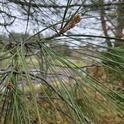
Finding an Ecological Niche: The Gray Pine
[Note: Gray pine (Pinus sabiniana), buckeye (Aesculus californica), and blue oak (Quercus douglasii) are tree species that thrive in rugged local foothill woodland and chaparral habitat. Last...
-
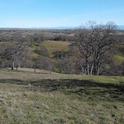
Finding an Ecological Niche: The Blue Oak
[Note: Blue oak (Quercus douglasii), gray pine (Pinus sabiniana), and buckeye (Aesculus californica) are three species that thrive in rugged local foothill woodland and chaparral habitat. Today...
-

Light in the Winter Garden
We in Northern California are fortunate to live in a climate that enables us to garden all year. Our moderate temperatures enable many vegetables to grow through the winter, and at most lower...
-
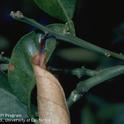
Citrus Blast
Cold, windy, rainy weather provides ideal conditions for the development of Citrus blast, a disease that affects many varieties of citrus grown in Butte County, including oranges, grapefruits, lemons...
-
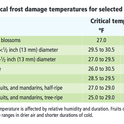
Frost Protection for Sensitive Plants
Winter has finally arrived in the north state! Winter temperatures can pose a threat to the fruit and foliage of citrus, as well as other succulents, tender perennials, tropical and subtropical...
Visit the Real Dirt archive for additional articles.
Got Gardening Questions?
Visit or call the Hotline
Tuesday 9am-12pm
Thursday 1-4pm
Call: 530-552-5812
Or drop by: The Butte County Cooperative Extension Office
5 County Center Drive, Oroville, CA 95965
Email Us
Email your questions to us at mgbutte@ucanr.edu. Include a description and photos of the problem. See "Help Us Help You" below for what to include.
Catch us in person
Look for us at local farmers markets or at one of our information booths at community events. Check out where we'll be on the Events page.
Help Us Help You
You never can tell what's at the root of the problem. Below are some questions we may ask when you call:
- Name of plant
- Age of plant
- Soil type (loam, sandy, clay)
- Current watering methods (drip, sprinkler, hand)
- Frequency of watering
- Sun exposure
- Evidence of insects or other damage – check on both sides of leaves
- Recent changes that may effect the plant (watering, fertilizing)
Samples and photos related to your question are strongly encouraged. Drop them by the office any time, or email them to: mgbutte@ucanr.edu
